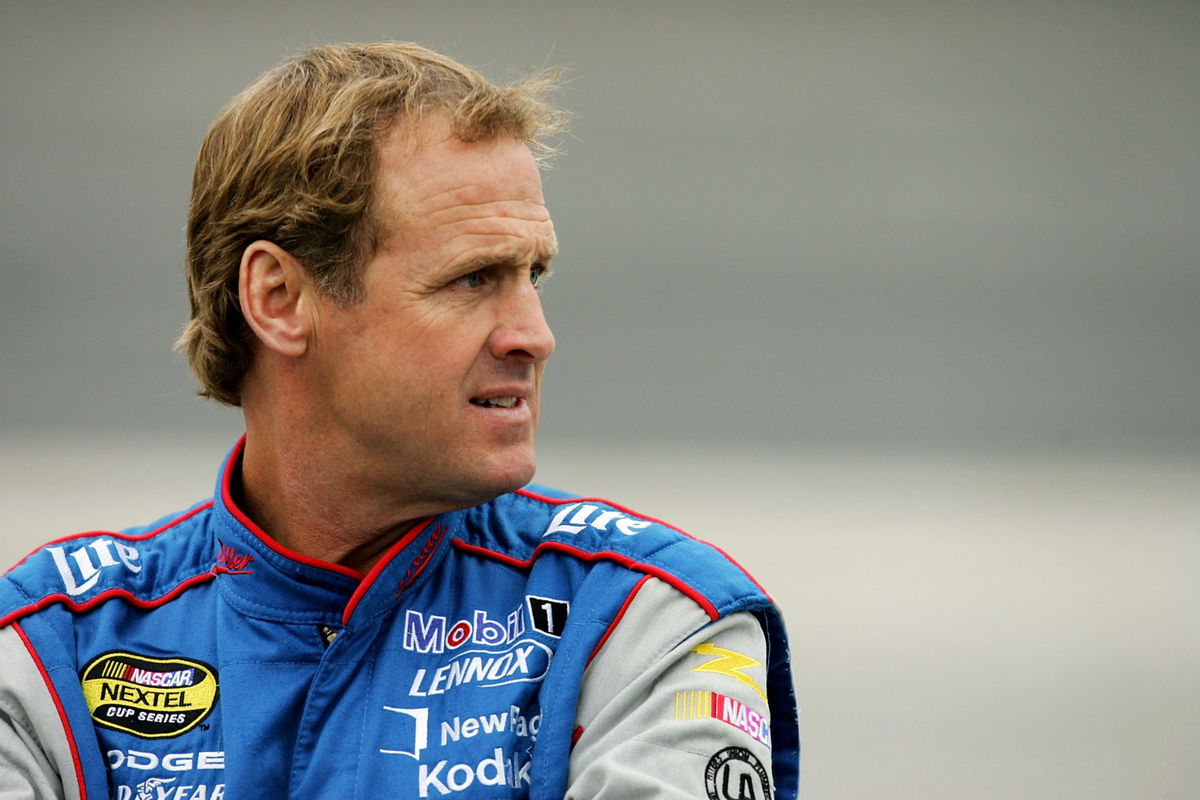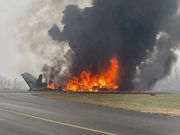
Getty
MARTINSVILLE, VA – OCTOBER 21: Rusty Wallace, driver of the #2 Miller Lite Dodge, looks on during NASCAR Nextel Cup Subway 500 Qualifying on October 21, 2005 at Martinsville Speedway in Martinsville, Virginia. (Photo by Streeter Lecka/Getty Images)

Getty
MARTINSVILLE, VA – OCTOBER 21: Rusty Wallace, driver of the #2 Miller Lite Dodge, looks on during NASCAR Nextel Cup Subway 500 Qualifying on October 21, 2005 at Martinsville Speedway in Martinsville, Virginia. (Photo by Streeter Lecka/Getty Images)
Since the inception of NASCAR, there have been incidents that have changed the course of history. 1989 Cup Series champion Rusty Wallace was involved in one of them. The 1993 Daytona 500 is a harbinger of change in the NASCAR community. While Rusty was involved in a violent wreck where his car flipped multiple times on the vicious Daytona backstretch, what followed has saved several lives in NASCAR.
Watch What’s Trending Now!
The invention of roof flaps is one of the most instrumental additions to the NASCAR race cars. The early 1990s witnessed 15 dangerous rollovers on the track, all with a high chance of fatality. NASCAR had been searching for a solution to minimize the loss of control when cars turned around at high speeds, but their efforts were in vain.
ADVERTISEMENT
Rusty Wallace’s terrifying Daytona crash
Rusty Wallace is one of the greatest drivers in existence of the sport. With 55 wins and a Cup Series championship, he entered the NASCAR Hall of Fame in 2013. But above these achievements, one of his most significant contributions was his input after his crash at the 1993 Daytona 500.
Following a nudge by the cars of Derrike Cope and Michael Waltrip, who were entangled with each other, Rusty Wallace’s car spun sideways and went airborne. The Pontiac rolled eight times on the backstretch before landing on its roof. Despite Rusty’s car being dismantled in the process, fortunately, his safety cage prevented any serious injuries.
ADVERTISEMENT
ADVERTISEMENT
The incident reminded NASCAR of the recent similar events that had passed. In the late 1980s, champions Bobby Allison and Richard Petty were involved in two horrible crashes that should’ve been paid attention to. Allison’s car even injured some fans as it rose above the retainer wall at Talladega. The King’s accident occurred a year later in 1988, as he collided with the fence in a violent manner.
However, these accidents didn’t gather as much traction from NASCAR as Rusty Wallace’s crash did. Rusty’s luck didn’t get any better as later in the season, he was a part of another wreck at Talladega in the Winston 500. These two crashes forced NASCAR’s engineers to take a serious look at the recurring cases of such crashes.
Read More: Roger Penske and Jimmie Johnson Join In as the Racing World Mourns the Loss of Gil De Ferran
ADVERTISEMENT
Top Stories
Greg Biffle’s Loved Ones Receive Heartbreaking Mail Days After Plane Crash Tragedy

Footage Surfaces of Florida Police Arresting NASCAR Veteran Over Disturbing Public Misbehavior

Rumors: Roger Penske to Double Down His NASCAR Partnership With Another IndyCar Crossover

Kyle Larson Surprisingly Pins Blame on Fans as He Walks Back on Controversial Max Verstappen Remark

NASCAR Legend’s Quiet Service to America Resurfaces After Fans Spot a Familiar Name

Roof-flaps: A life-saving addition to NASCAR
NASCAR cars used to weight about 3,600 pounds. It is difficult to explain what made such heavy objects get airborne and to heights higher than the fencing. On a deeper dive into the intricate details of the situation, NASCAR found out that once cars reached a speed of 180 mph, the air flowing over the car created a low pressure vacuum which uplifted the car as it began to spin at a high speed.
The team that worked extensively on the development of a solution was Roush Racing. The conclusions showed that the addition of roof flaps would create dirty air over the car and that decreases the amount of lift force under the vehicles when they spin. The flaps would only be deployed when a car underwent sudden changes in direction at high speeds and wouldn’t interrupt the normal operation of a car.
ADVERTISEMENT
Looking at the positive outcome, NASCAR immediately mandated roof flaps for every race car and especially on tracks longer than a mile. The effects of the changes were instantly recognized as Todd Bodine underwent a violent spin at the 1994 Daytona 500. His car’s tail lifted slightly and settled down on the asphalt soon after spinning.
Since 2014, NASCAR has set the dimensions of the roof flaps at 24 by 8 inches and 11 by 14 inches. These changes have proved to be life-saving and even though Daytona has still shown instances of several cars flipping in the air, the number could have been a lot higher.
Watch This Story: The Uncertain Road Ahead Matt Dibenedettos 2024 NASCAR Journey
ADVERTISEMENT
ADVERTISEMENT
ADVERTISEMENT
ADVERTISEMENT

